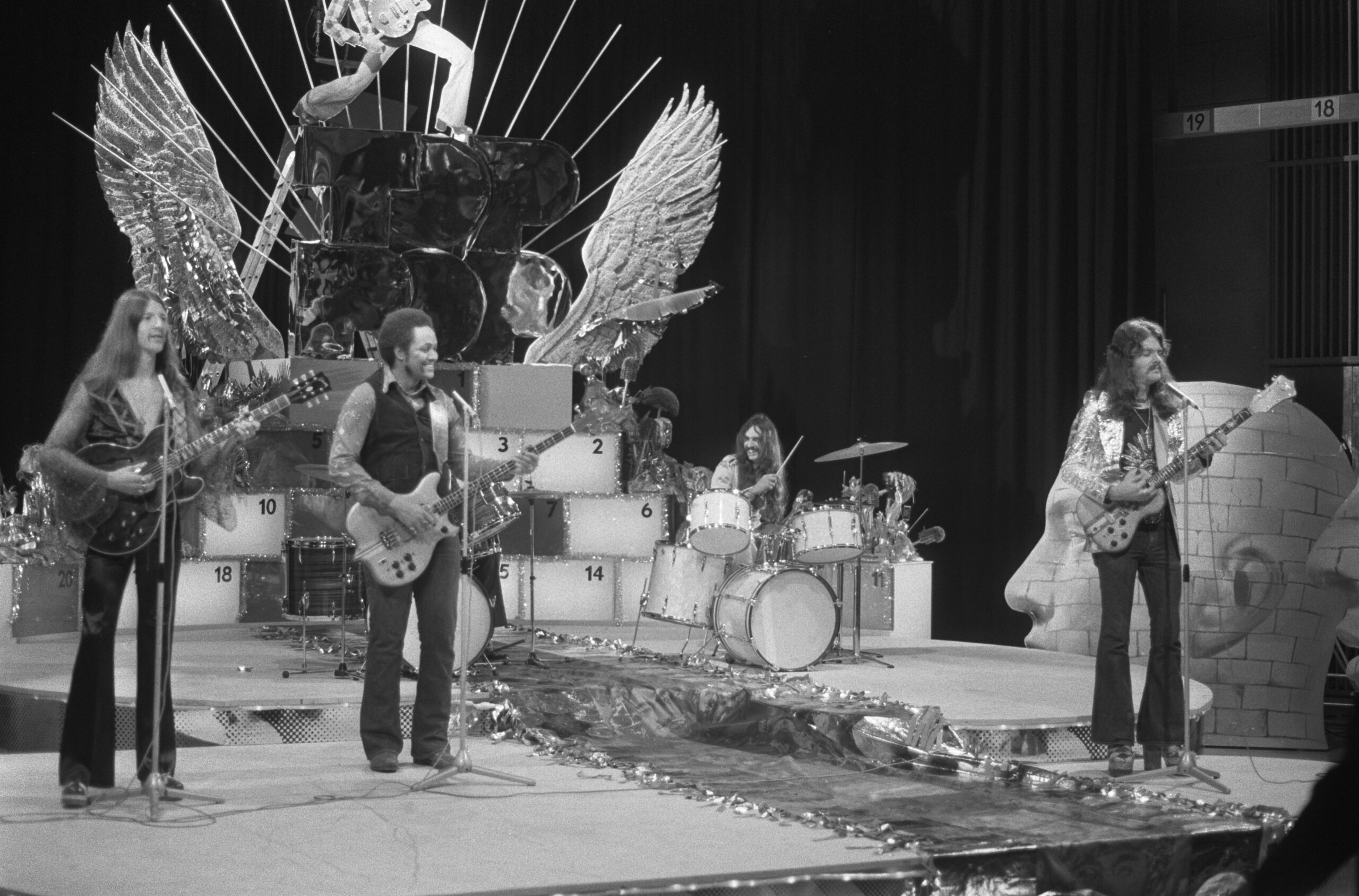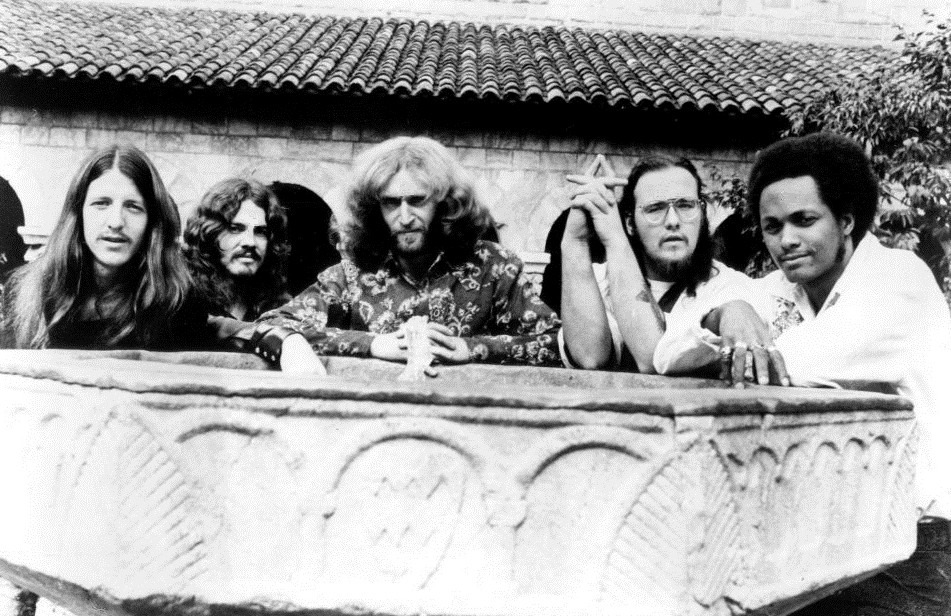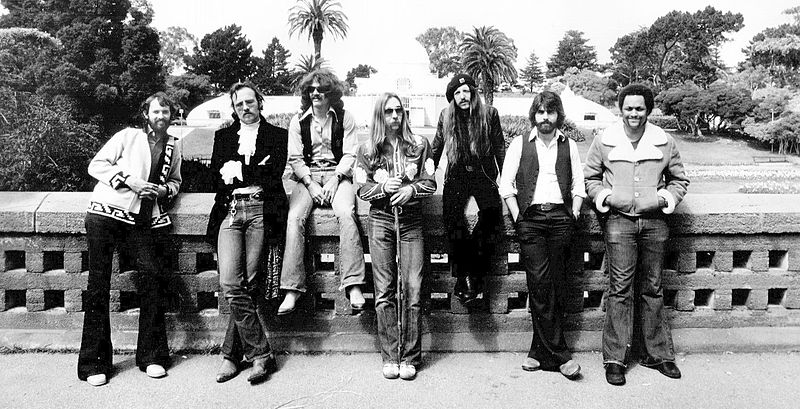How the Doobie Brothers was formed?
The Doobie Brothers are primarily known for their 70s music era-hit “What a Fool Believes,” although they also enjoyed other major hits such as “Blackwater,” “Real Love,” “The Doctor,” “Long Train Running” and other minor hits.
It was in San Jose, California, where the group that would become the classic rock/soft rock Doobie Brothers was formed. The original members Tom Johnston (formerly of Moby Grape; guitars/vocals, songwriting) and John Hartman (drums) formed a short-lived music act called Pud. After Pud disintegrated, Johnston and Hartman teamed up with Dave Shogren (bass) and Patrick Simmons (guitars, vocals, songwriting), forming a quartet.
The foursome later named themselves the Doobie Brothers and began to play live local sets in Northern California (or some sources say Southern California). They were a particular favorite among members of Hells Angels (a motorcycle club).
In 1970, the Doobie Brothers signed their first contract with Warner. Their eponymous debut album, which was released a year later, was largely ignored. By the time they were about to record their second album, they experienced personnel changes. Tiran Porter joined, replacing Shogren, and Michael Hossack was designated as the group’s second drummer.
Breakthrough success
The Doobie Brothers released their second effort Toulouse Street in 1972. This time the album led the band to its breakthrough success. Two singles from the album became hits: “Listen to the Music” (at #11 on the Billboard Hot 100) and “Jesus Is Just Alright” (at #35), both of which would become rock staples.Toulouse Street reached its peak position at #21 on the Billboard 200 album chart, earning the band their first platinum disc. A string of smashes for the group would eventually follow.
The Doobie Brothers released their third album The Captain and Me in 1973. It gave the group their first-ever Top 10 pop hit “Long Train Running,” which reached #8. Another single “China Grove” topped off at #15. The album earned a double platinum certification.
Another change of lineup occurred when Ketih Knudsen replaced Hossack (who suddenly quit because he got tired of the constant touring) as the group’s new second drummer in time for the group’s next album What Were Once Vices Are Now Habits. Eventually released in February 1974, it became the group’s first Top 10 album on the Billboard 200. The album spawned its first #1 hit, the roots-rock track “Black Water,” which would become one of the group’s signature tunes. It also spawned another Top 40 smash “Another Park, Another Sunday” (at #32).What Were Once Vices Are Now Habits also featured prominent contributions from guitarist Jeff “Skunk” Baxter of Steely Dan; Baxter would eventually join the Doobie Brothers as their third guitarist in 1975.
The group was still touring on a packed schedule, and because of the intense rigors brought by it, Johnston fell seriously ill and begged off from any of the band’s future commitments. He was replaced by another keyboardist Michael McDonald, also formerly of Steely Dan.
Stampede, the band’s fifth album, was released in 1975. The album witnessed the band branching out their eclectic elements. It featured contributions from other respectable artists such as Curtis Mayfield. Stampede peaked at #4, and it produced the danceable tune “Take Me In Your Arms (Rock Me)” which was a slight nod to the emerging disco genre. It peaked at #11 on the Billboard Hot 100 that same year.
Still the band saw Stampede as less commercially successful compared to its predecessors. With the absence of Johnston (the band’s primary songwriter) McDonald and Baxter stepped up to do the songwriting chores. Simmons had already been providing much material to the group.
Members
Present official members
- Patrick Simmons – guitar, banjo, flute, vocals (1970–82, 1987–91, 1992, 1993–present)
- Tom Johnston – vocals, guitar, harmonica (1970–77, 1987–91, 1992, 1993–present)
- Michael McDonald – vocals, keyboards, mandolin, accordion (1975–82, 1987, 1992, 1995–96, 2019–present)
- John McFee – guitar, violin, pedal steel guitar, harmonica, vocals (1979–82, 1987, 1993–present)
Present touring members
- John Cowan – bass, lead and backing vocals (1993–95, 2010–present)
- Marc Russo – saxophones (1998–present)
- Ed Toth – drums, percussion (2005–present)
- Marc Quiñones – percussion, backing vocals (2018–present)
Interesting Facts
The Doobie Brothers are known for the following interesting facts:
- In an interview with Pat Simmons, it was stated that during the band’s early years, Keith “Dyno” Rosen, a fellow musician, suggested the name “The Doobie Brothers” since the members were frequently indulging in herbal pleasures.
- The Doobie Brothers’ self-titled debut album was released in 1971. It just took 10 days to record and only $15,000 to produce.
- Although the band’s lineup has changed several times over the years, original members Tom Johnston and Patrick Simmons are still involved in its day-to-day operations.
- The Doobie Brothers have a reputation for doing good deeds and have lent their support to a variety of organizations, such as the World Wildlife Fund, Farm Aid, and the Make-A-Wish Foundation.
- Forrest Gump, Dazed and Confused, and “The Sopranos” are just a few of the films, TV series, and advertisements that have included The Doobie Brothers’ music, which is still widely used today.
- When Michael McDonald joined the Doobie Brothers in 1975, the band’s sound was forever changed by his unique vocal and piano playing.
- The Doobie Brothers have received four Grammy Awards, including one for “What a Fool Believes” in 1979 for Best Pop Performance by a Duo or Group with Vocals.
- One of the best-selling bands of all time, the group has sold more than 40 million records worldwide.
- Both the Rock & Roll Hall of Fame and the Vocal Group Hall of Fame inducted the Doobie Brothers in 2004 and 2020, respectively.
From guitar-based rock to blue-eyed soul approach
The revamped band released their next album Takin’ It To The Streets in 1976. The album witnessed a radical change from their previous guitar-based rock to a more mellowed blue-eyed soul and soft rock offering. The album spawned two Top 40 pop singles, “It Keeps You Runnin'” (at #37) and the title track (at #13). The effort earned the band another platinum disc. Later that year, the Doobie Brothers released their second compilation LP Best of The Doobies which became their biggest-selling album in the band’s history. It sold 10 million copies in the US alone, and also sold 2 million copies in Canada.
“What A Fool Believes” — the group’s signature tune
In 1977, the Doobie Brothers came out with another studio album Livin’ on the Fault Line which managed to do well despite minor hit singles. Johnston, who had already convalesced from his bleeding ulcer, quit the band to pursue a solo career. In 1978, the band released Minute By Minute. It became their first #1 album, and stayed there on top for five weeks, thanks to the successful single “What a Fool Believes” which went to #1 on the Hot 100. The single also gave the Doobie Brothers two Grammy Awards for Song of the Year and Record of the Year in 1980. It remains one of the band’s trademark songs.
Split and re-formation, this time with newer members
The band experienced another personnel change as John McFee (formerly of the band Clover) and another saxophonist Cornelius Bumpus (formerly of Moby Grape) joined the group. In 1980, the Doobie Brothers released One Step Closerwhich was also a guaranteed platinum seller on the strength of its two singles “Real Love” (at #5) and the title track (at #24). In the early 1980s, the Doobie Brothers announced that they would be splitting, and their farewell tour in 1983 was documented and released as a live album with the title, simply as Farewell Tour. After the split, several former band members went to their own musical pursuits.
Earlier band members Johnston, Simmons, Porter, Hartman and Hossack got back together in 1989. Bobby LaKind, a former roadie, joined the band as their new percussionist. The reunited Doobie Brothers inked a new deal with Capitol Records and released Cycles, their first album in nine years. It did decently on the charts, peaking at #17 and netting a gold certification. The album’s single “The Doctor” reached its peak position at #9, and was their last Top 10 hit.
The Doobie Brothers’ subsequent releases Brotherhood (1991) and Sibling Rivalry(2000) failed to register high on the charts. By then the Doobie Brothers became a band for the oldies music /revivalist circuit. After some personnel changes again, the group settled in their current lineup — Johnston, Simmons, McFee, and newer members John Cowan, Guy Allison, Marc Russo, Tony Pia and Ed Toth.
The Doobie Brothers released their last studio album World Gone Crazy in 2010, which did well reaching #39 on the Billboard 200. It featured former member Michael McDonald as a guest on one of its tracks.




